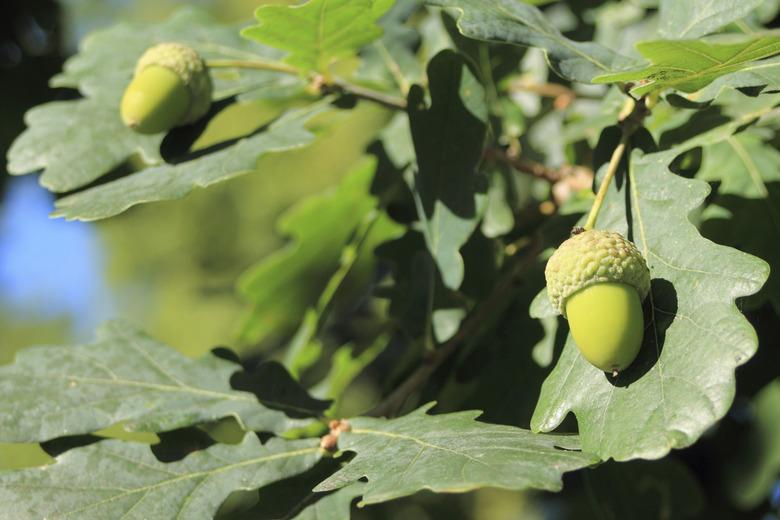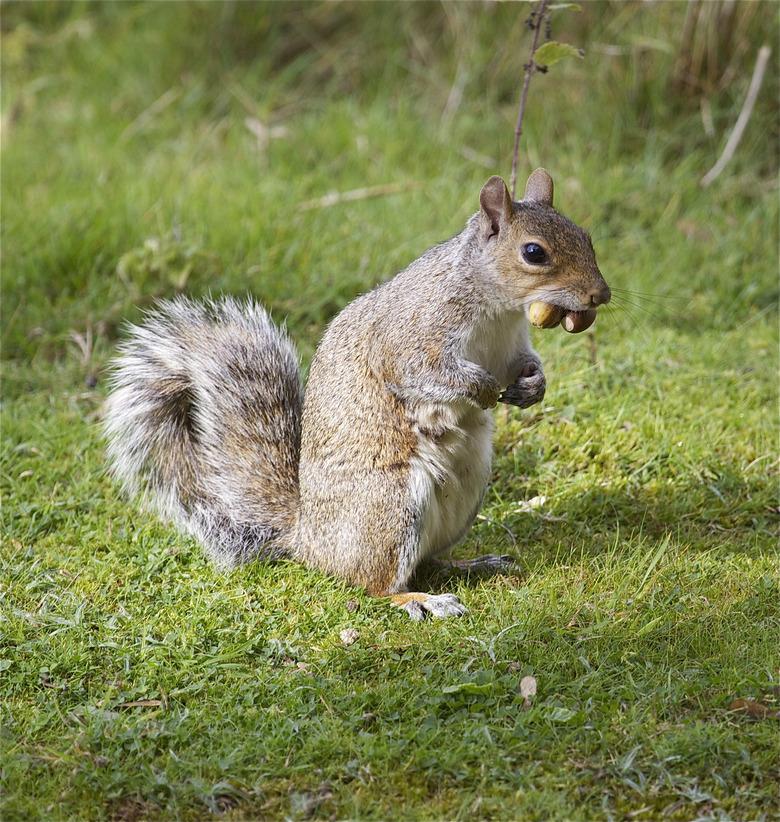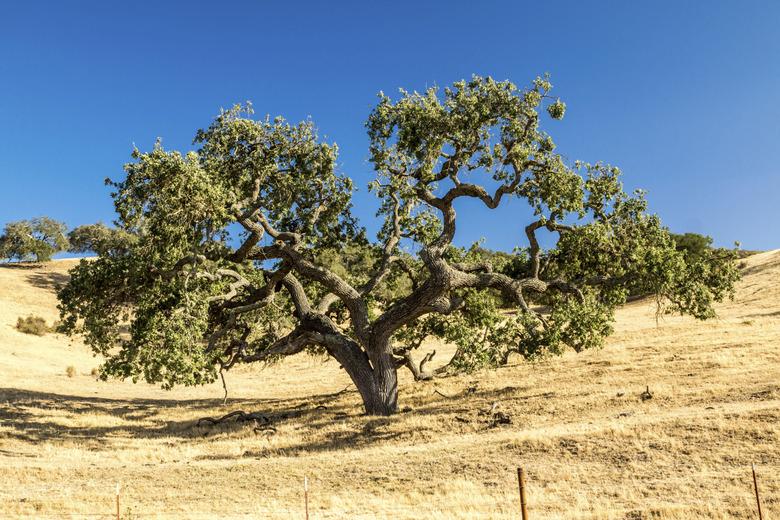Life Cycle Of Oak Trees
Oak trees are majestic, with strong trunks and spreading branches. Individual trees can live for a hundred years or more, far longer than the gardener who plants them. Botanists divide oak trees into two basic groups: white oaks and red oaks. Each group has a different life cycle, but both include flowering, fruiting, seed dispersal, germination and maturation.
Flowering
Flowering is part of an oak tree's life cycle. The flowers on oak trees are not the showy kind, and the average observer may not even recognize them as blossoms. Among other factors, botanists categorize flowers by how they are pollinated. Some flower types are insect-pollinated, while others are pollinated by wind. Oak trees have flowers that are wind-pollinated. In other words, rather than an insect actively carrying pollen from the male flower to the female, the pollen simply drifts in the air. Some of it will land on female flowers and pollinate them.
Fruiting
The fruit and seed of the oak tree is the familiar acorn. Once the oak tree has flowered and wind has scattered pollen and pollinated the female flowers, the acorns begin to develop.
Oak trees in the white oak group have acorns that mature and are ready to germinate in one season. The white oak tree flowers in the spring; its acorns develop during the spring and summer, then drop and are ready to sprout in the fall of that same year. Acorns developing on a tree in the red oak group grow and develop just as those of the white oak, but are not mature and ready to sprout until after winter and into the following year.
Seed Dispersal
Unlike the seeds of a tree like a maple, acorns are not generally carried away by the wind. Instead, they fall and land close to the parent tree. Animals, especially squirrels, scatter the acorns. The occasional acorn overlooked by its rodent hoarder may, in this way, sprout and grow some distance from the parent tree. It's worth noting, too, that acorns that fall into a stream or river may be carried considerable distances from the parent tree.
Germination
Given favorable soil conditions, an acorn that has survived the numerous potential damaging agents — including being eaten by animals or attacked by insects — may send down its taproot, send up its shoot and begin its life as a young seedling.
Maturation
An oak tree is a long-lived organism. As with any living thing, though, the oak tree's life is something of a gamble. Even after surviving the acorn stage, there are threats. The young seedling could be eaten by a deer, burned in a fire or bulldozed by humans. If chance is on its side, the oak seedling will grow through the sapling stage to become a small tree and eventually begin flowering and producing acorns of its own. If and when it does, and when just one of those acorns survives and grows into a mature tree, the life cycle of the oak tree will be complete.





